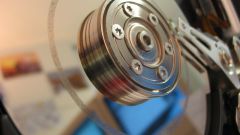Instruction
1
Disconnecting of the conductor is familiar to many users of the Windows operating system: from the desktop lost all the labels disappear and the "start" button and the row of the task pane. The user sees only the background image of the desktop and a window open at the time of failure of the program. To bring the computer out of this state, it is necessary to understand the cause of the situation and know how to fix it.
2
The direct cause of the situation described above is the completion of the process Explorer explorer.exe. Open task Manager by pressing Ctrl + Alt + Del and view the processes list. Among them are explorer.exe. If you complete this process, the guide will turn off, will I lose access to the desktop, files and folders.
3
To restore the Explorer process is very simple. Open task Manager, select menu "File" - "New task (Run)". In the opened window enter explorer.exe and click OK. The guide will start in a few seconds, the computer's health will be fully restored. You don't even lose your data open at the time of crash programs.
4
Because Explorer is the main tool of interaction with the computer, many users are trying in some way to improve it. For example, you can use QT Tab Bar, giving the Explorer new opportunities. Read more about this program you can read here: http://optimakomp.ru/uluchshaem-provodnik-windows/.
5
Opening any drive or folder, you work with Explorer. It can be accessed via the menu "start" - "All programs" - "Accessories" - "Windows Explorer". When opened this way, the program always displays the contents of the folder "My documents", which is not always convenient. But you can change the Explorer settings to show all drives. Then placing a shortcut of Explorer on your desktop, you will get a conveniently customized tool for working with files and folders.
6
To carry out this revision, open "start" - "All programs" - "Accessories". Then click on "Windows Explorer" right-click and select the context menu item "Properties". A window will open, you need a string Object with the text %SystemRoot%explorer.exe. Replace the text string %SystemRoot%explorer.exe /n, /e, /select, C: and save the changes. Please note that at the end of the row specified disk, it is the first disk on most computers.
7
Now open task Manager and end the process explorer.exe. Run it again as it was described in the beginning of the article. Again go to start - All programs - Accessories - Windows Explorer. You will see a convenient list of drives on your computer. If necessary, create a shortcut on your desktop again, open the "start" - "All programs" - "Accessories", select "Explorer" right-click and select "Create shortcut". Then drag the pop-up "Windows Explorer (2)" on the desktop and correct, if you want, its name.


